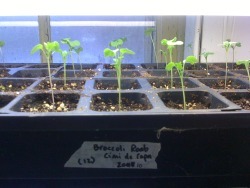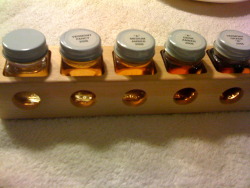As part of our Lenten observances, we've been watching a series of videos called "The Powers of the Universe." Each segment is an hour-long talk by Brian Swimme, a mathematical cosmologist and one of the leading figures in "the new cosmology." Cosmology is the study of the universe--a huge topic, undertaken from a wide variety of disciplines, including science, philosophy, mathematics, and religion.
For me, what's important about cosmology is that what we believe about the universe has great implications for what we imagine to be our human role, and therefore for our behavior. Our beliefs might be shaped strictly by physics, or by our spirituality, or both. We tell ourselves and our children "origin stories," which are bound up in our culturally shaped cosmological beliefs. Are humans simply the result of chance mutations, over billions of years? Are Adam and Eve the progenitors of all humanity? Is Earth the center of the universe, or just one tiny speck among billions of specks? Most likely, we hold more than one perspective on the universe and the role of humanity at a time.
 From the Hubble Telescope. Credit: NASA, ESA, and The Hubble Heritage Team (STScI/AURA) Acknowledgment: P. Knezek (WIYN)
From the Hubble Telescope. Credit: NASA, ESA, and The Hubble Heritage Team (STScI/AURA) Acknowledgment: P. Knezek (WIYN)
I recently visited the Rubin Museum in NYC, which is holding a great exhibit about different attempts at understanding the universe, in the Hindu, Jain, Buddhist, Christian, and current scientific traditions. (Learn more about the exhibit here; it is open until May 10, 2010.) There I watched a short video produced by the American Museum of Natural History that was simply amazing: called "The Known Universe," it takes the viewer from gazing upon the Himalayan Mountains to zooming all the way out to the beginnings of the universe, 13.7 billion years ago. You can watch it online: Take a look. It's well worth it a few minutes of your time!
Getting your mind blown like that is a good thing to do, and regularly. I think too often, and too easily, we get caught up in the minutiae of life--what to eat for dinner, whether to go here or there, what color to paint the walls . . . all the multitude of choices in our lives. Stepping out of that whirlwind to remember how tiny we are in the great cosmic lightsky helps me focus on what really matters. For me, that means remembering that this world, this universe is alive. The whole thing is alive. And I can tune into that life, that energy, or I can stomp around in my little world, getting pissed about trivial things. If you see yourself as part of the universe, connected to this unfathomably long history and unimaginable expanse, it's easier to let go of the small stuff.
This awareness is related to something Brian Swimme says in his talk on "Allurement." His talks are fascinating and complex, and too much to summarize here. But to give you a sense: having spent years studying gravitational dynamics, and coming to understand gravity mathematically inside and out, Swimme suggests that we think of gravity as a larger universal power of allurement. That just as we are drawn to our lovers, to artists or musicians, to passions of all sorts, there is a power that pervades the universe that draws things--objects, planets, stars in galaxies--to one another. That we are always orbiting, and in relationship with, other beings. I'm sadly inarticulate here, and I urge you to check out the DVDs yourself.
Anyway, Swimme says that what we focus on shapes us. We are drawn to a person, or a practice, or a context, and focusing on that "other" will shape our life, our sense of self. This seems to me to be undeniably true. When I've focused on an emotional wound, and nursed anger and resentment about that wound, my world has been characterized by that attention, growing smaller and darker. When I've focused on loving relationships, and on becoming a worthy partner, my world has become energized, and full of possibility. One might argue that in these two simple examples, the physical world around me hasn't actually changed, only my attitude. I think that's true, at one level--but my embodied experience tells me that more is at work than simply one's individual mental outlook.
We are in orbit with one another, and when I focus on light and life, that not only shapes my world, but the effects bleed over into the lives of those in my orbit. Recent research shows that all sorts of behaviors and conditions (obesity, smoking, loneliness) are impacted, even "transmitted" through social connections. Examining some of these studies, Jonah Lehrer writes:
We imagine ourselves as individuals, responsible for our own choices and emotions, but that sense of independence is a romantic myth. There is no wall between people. . . . What we all too easily forget . . . is that we're also part of a social network, which means that if we lose weight then it's easier for our neighbors to lose weight, and that if we quit smoking than everyone we know is also more likely to quit smoking. Being socially connected, in other words, makes us more responsible for our actions, not less.
We are in orbit with one another, and we a part of the cosmos. It matters what we focus on. It matters what stories we tell ourselves about our place in the universe. In these last months, I have found that learning to see myself as part of, emerging from the flow of energy and life and ancient particles, all of which have arisen into being and been reconstituted in new forms over and over again ever since the Big Bang . . . this focus imbues my life with a love for the world. We are stardust, literally. Formed, for the merest of moments, as a human being, on a tiny blue-green speck, in a sea of stars. If we can just hold on to the magic and majesty of that awareness, we can live in true relationship with Earth, rather than being consumers and disposers, drillers and miners, polluters and poisoners. A new cosmology means being part of creation, rather than standing outside or on top of it. In these rainy, stormy days of March, my wish is for us all to marvel at the powers of the universe, and to wonder about our own roles in it.










